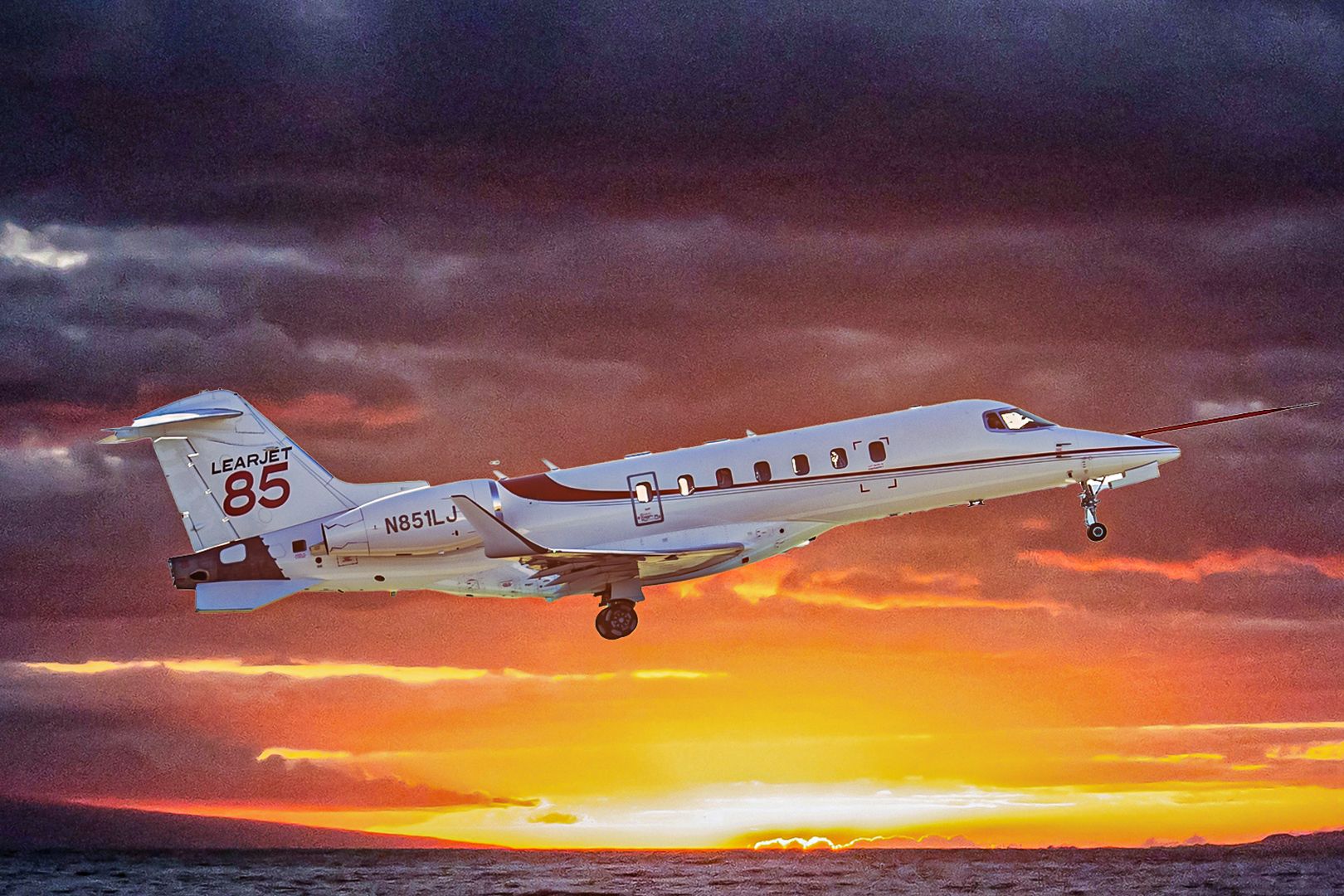Summary The Learjet 85 was canceled due to lack of orders and high development costs after 60 aircraft were ordered at $17 million each. Bombardier faced large financial losses and job cuts due to the program suspension, shifting focus to other projects like the Global 7000/8000. Despite its advanced design, only two Learjet 85 were built and only 70 hours of flight were logged.
The Learjet 85 was an aircraft under development by Bombardier Aerospace . It was first launched at the National Business Aviation Association (NBAA) convention on October 30, 2007. Bombardier acquired Learjet in 1990 and had launched eight high-performance and fuel-efficient Learjet aircraft.

The Learjet 85 was to bridge the gap between the mid-size and super mid-size jets already on the market. Let's find out more about the aircraft and why the project was canceled. Innovation and design The Learjet 85 was the first Bombardier aircraft to have a composite structure and was designed by computer software design tools including HyperSizer and CATIA.
The wing technology was taken from the Bombardier CSeries. The aircraft had a high speed cruise of Mach 0.82 and a range of 3000 nautical miles or 5,600 kilometers.
The aircraft was built between sites in Wichita, US, Montreal, Canada, Queretaro, Mexico and Belfast, Northern Ireland. Interested in finding out more about private aviation? Find more articles like this here Subsequent issues On January 15, 2015, Bombardier suspended the Learjet 85 program and announced the loss of 1000 jobs connected with the program. They said that the program had cost too much already and orders were lacking.
They had received 60 orders for the $17 million aircraft. Bombardier also wanted to concentrate on the CSeries and the Global 7000/8000. "t’s a really challenging segment and the program still needed money injected.
..You find yourself in that situation when you have too many initiatives.
You want to focus on what are the top priorities of the organization and then you look at the market challenge...
for the Lear 85. That’s the reason we came to the conclusion that the market was not supporting further investment.” Alain Bellemare, CEO, Bombardier Aerospace, told to Aviation International News .
On October 29, 2015, the Chief Executive Officer of Bombardier Aerospace, Alain Bellemare announced that in the third quarter of the year, the manufacturer had losses of $4.9 billion including the Learjet 85 program which had cost $2.6 billion.
Although they had in the same quarter orders for 41 aircraft, they had cancelations for 73 aircraft, including 64 of the Learjet 85. The CSeries was also becoming problematic. Want answers to more key questions in aviation? Check out the rest of our guides here Testing times The Learjet 85 took its first test flight on April 9, 2014.
The flight was two hours and 15 minutes long and the aircraft reached an altitude of 30,000 feet and a speed of 250 knots (463 kilometers per hour or 287 miles per hour). By the time Bombardier canceled the program in October 2015, the test aircraft had logged just over 70 hours. A little more about the Learjet 85 The aircraft was designed to be the largest, fastest and most capable Learjet ever built.
The Learjet 85 offered great performance, superior technology and at $17 million, was a good value for money aircraft considering its size and capabilities. It was powered by two Pratt and Whitney Canada PW3078 turbofan engines that produced 6,100 pounds of thrust. The Learjet 85 was a low noise and low emission aircraft.
Aircraft specifications Learjet 85 (Data from Bombardier Aerospace) General characteristics Crew: two Capacity: eight passengers Length: 20.76 m (68 ft 1 in) Wingspan: 18.75 m (61 ft 6 in) Height: 6.
08 m (19 ft 11 in) Wing area: 37.25 m2 (401.0 sq ft) Empty weight: 10,977 kg (24,200 lb) Max takeoff weight: 15,195 kg (33,500 lb) Powerplant: 2 × Pratt & Whitney PW307B Turbo fans Read more: How Much Does It Cost To Operate A Learjet 75? Performance Maximum speed: 871 km/h (541 mph, 470 kn) Cruise speed: 829 km/h (515 mph, 448 kn) Range: 4,800 km (3,000 mi, 2,600 NM) Service ceiling: 15,000 m (49,000 ft) Advanced features in the flight deck The flight deck was fitted with state-of-the-art avionics and had fly-by-wire controls and advanced safety features for a smooth and comfortable flight.
The Rockwell Collins Pro Line Fusion avionics included features such as: Electrical Flight Instrument System (EFIS) Inertial Reference System (IRS) Integrated Flight Information System (IFIS) Synthetic Vision System (SVS) Terrain Awareness and Warning System (TAWS) Dual Flight Management System (FMS) Surface Awareness System Weather Radar System Autothrotlle Wide Area Augumentation System (WAAS) Two Electronic Flight Bag (EFB) In the cabin The spacious cabin could seat nine passengers in double club seating with fold out executive tables. The cabin volume was 19% more than any aircraft in a similar category. Four of the seats could be used as lie-flat beds.
There was ample room for baggage in the three large closets and a baggage compartment. The interior was designed by the company Design Q, who gave it it's almost super car feel. There was Wi-Fi, an inflight entertainment system and a cabin management system to change temperature, sound and lighting.
The aircraft had a large galley area for meal and drink preparation. There was a lavatory with a vanity unit and a sink at the rear of the aircraft. In a six-club seating configuration, a three-seat divan could be added.
Related: What Are The Projected Operating Costs Of The Global 8000?.



















